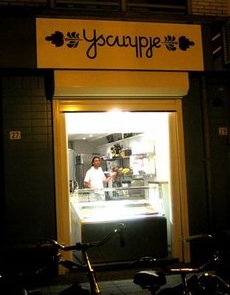For the casual observer looking at the Netherlands, the Tulipmania story has it all: tulips, the Golden Age, the start of modern capitalism, windmills, clogs… OK, so everything but the last two. For the puritans among you, this tale has even got a moral. Here’s a quick recap of how the story goes:
In the 17th century, the Dutch were at the top of their wealth, both financially and culturally. The Dutch trading ships controlled the seas, and brought the treasures of foreign countries to these shores. This wealth ignited the local Renaissance, giving artists like Rembrandt and Vermeer, and scientists like Van Leeuwenhoek and Grotius a chance to plie their trade. A story from that time goes that the first economic bubble was also created by the Dutch. Among the many things they imported were tulip bulbs, which started to fetch higher and higher prices. At one point, a box of bulbs would cost as much as a house. But in the spring of 1637 the bubble was burst; Dutch pride was punished, and thousands of traders went bankrupt.
At least, that’s the popular version of the story. According to a recent book written by Anne Goldgar, most of what we know about the bubble stems from propaganda from the period. An interesting review from the Financial Times tells more:
Some contemporary pamphleteers attacked the trade, baffled by what one Englishman called the ”incredible prices for tulip rootes”, and disquieted by the godless materialism of it all. […] Most tulip tales we know, scolds Goldgar, ”are based on one or two contemporary pieces of propaganda and a prodigious amount of plagiarism”.
In fact, during her research Goldgar could not find the name of a single person who had been bankrupted by the burst of the bulb bubble.










